I was getting ready and saw a tiny hole in my pants. 😑 I plan to wear them. I didn’t have anything to match my outfit. I had to find some way to fix the darning repair. That’s when Grandma came and said to do an invisible darning stitch.

That invisible stitch to repair a hole works like magic, trust me. It is mostly used for repairing moth holes.
I ask her to teach me how. She happily took the clothes and started demonstrating to me just like she taught me different sewing stitches by hand.
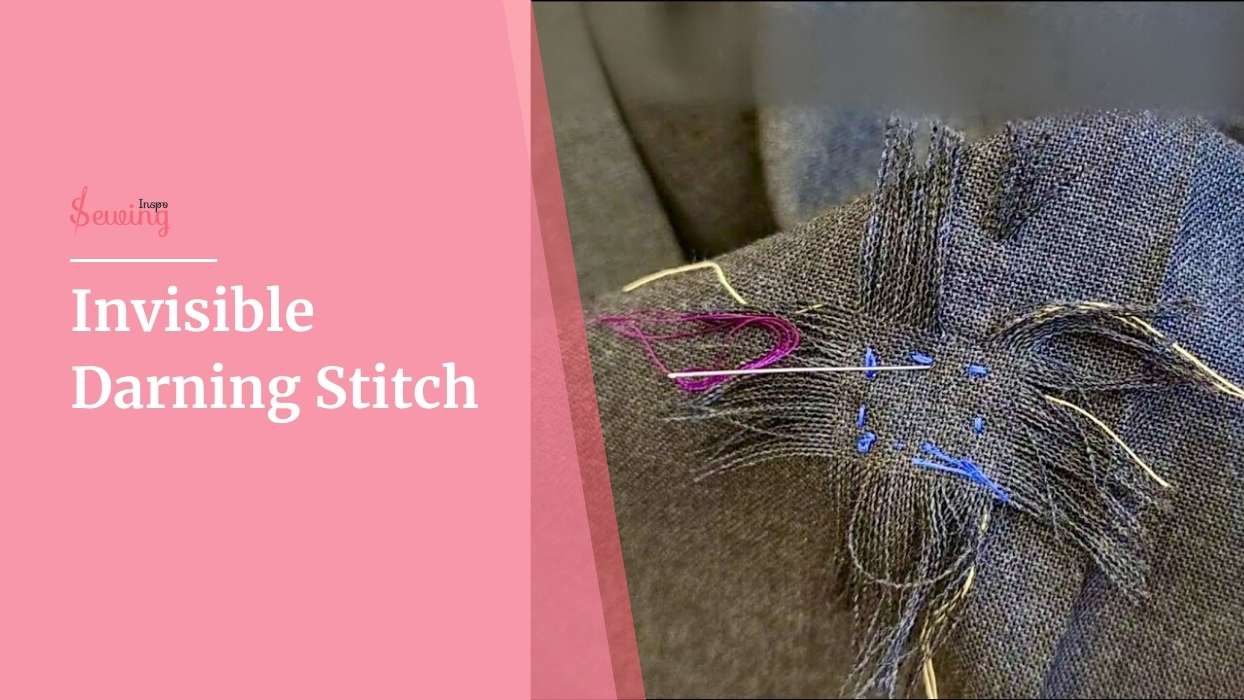
Invisible Stitch Hole
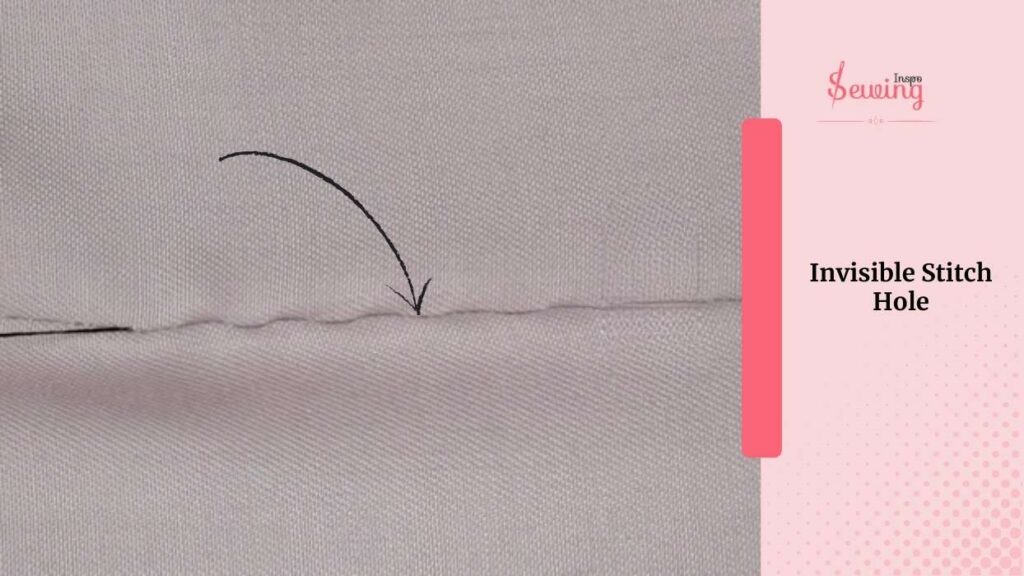
So, let’s teach you how to sew a hole without it showing. The invisible darning stitch tricks.
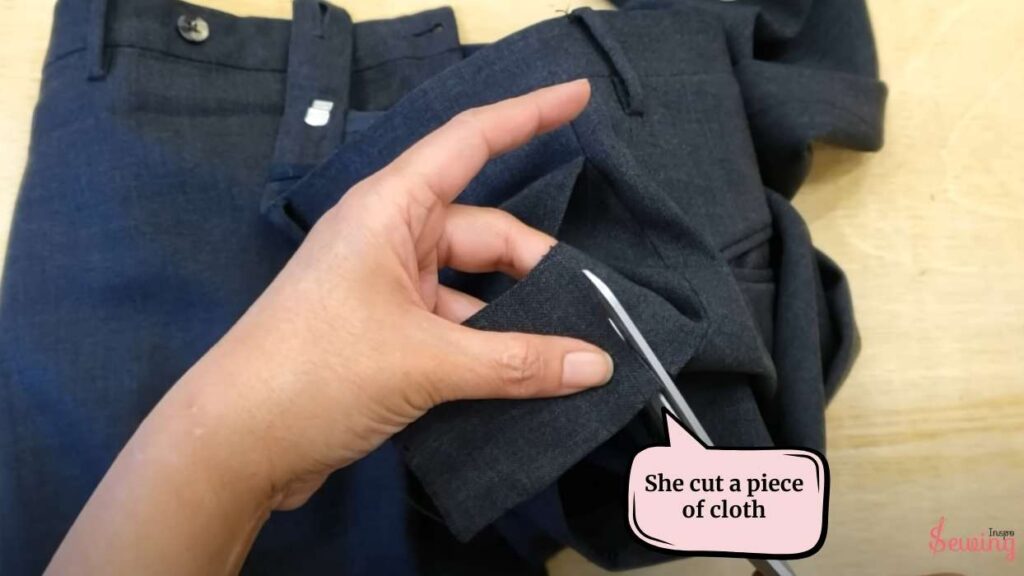
First, she cut a piece of cloth but left about ½ inch extra around the edges for sewing later. You can do this for darning linen too.
Now, she carefully removed some threads and warp fabric from the left. You can pull 2 threads at a time if you’re brave, but don’t go too fast! Fast stitching won’t create an invisible stitch to fix a hole. You need the fabric to keep its shape and make a perfect darning stitch. That will create a hidden stitch.
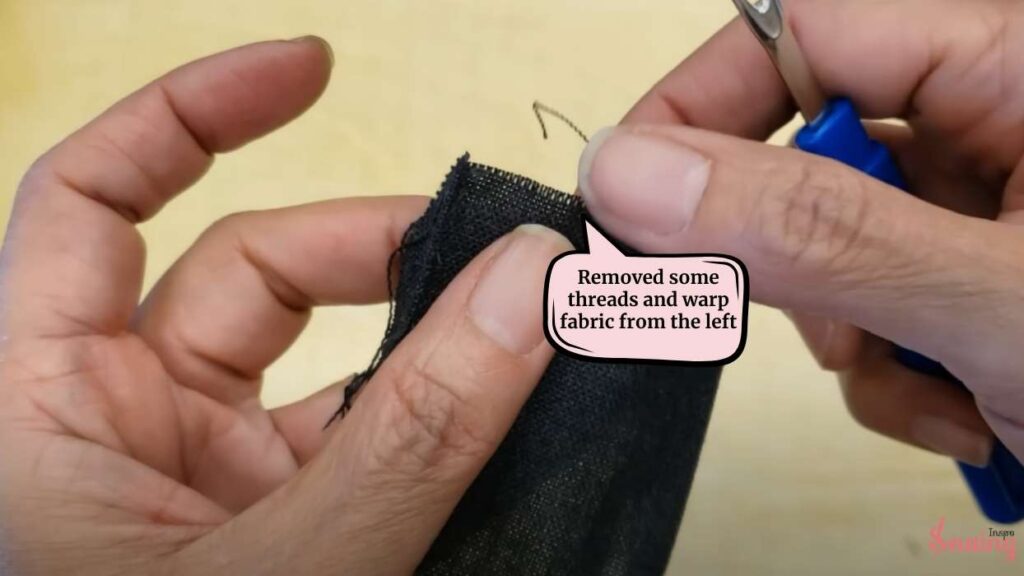
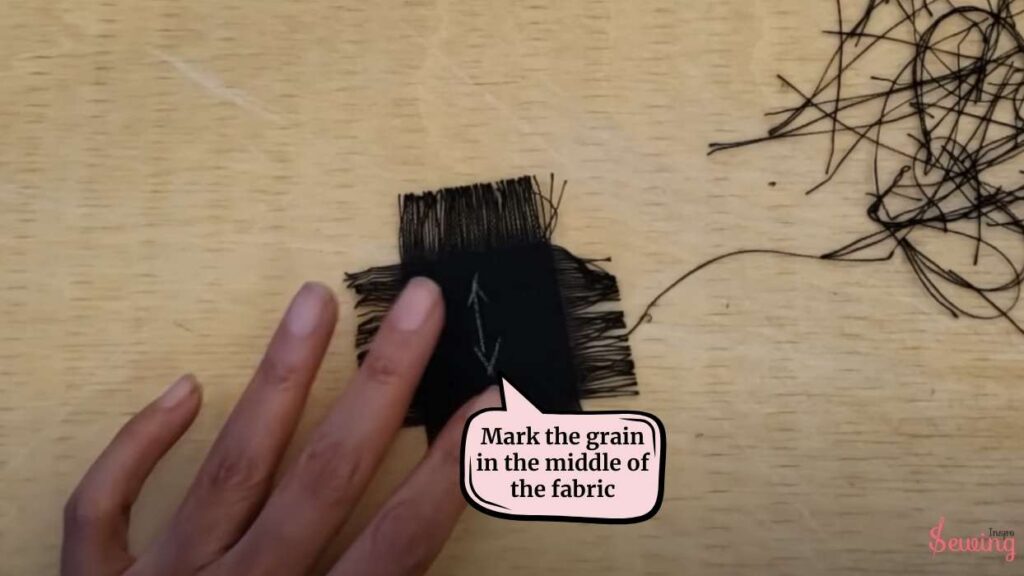
Also, mark the grain in the middle of the fabric so you don’t get confused. It’s easy to mix up like a surface stitch.
Next, she keeps trimming and shaping the patch until it’s the right size. Don’t make it too big, though! A smaller patch is less work and looks neater. Leave a thread or 2 extra, but no more than that. Now, it’s time to place the patch and make the perfect invisible darning.
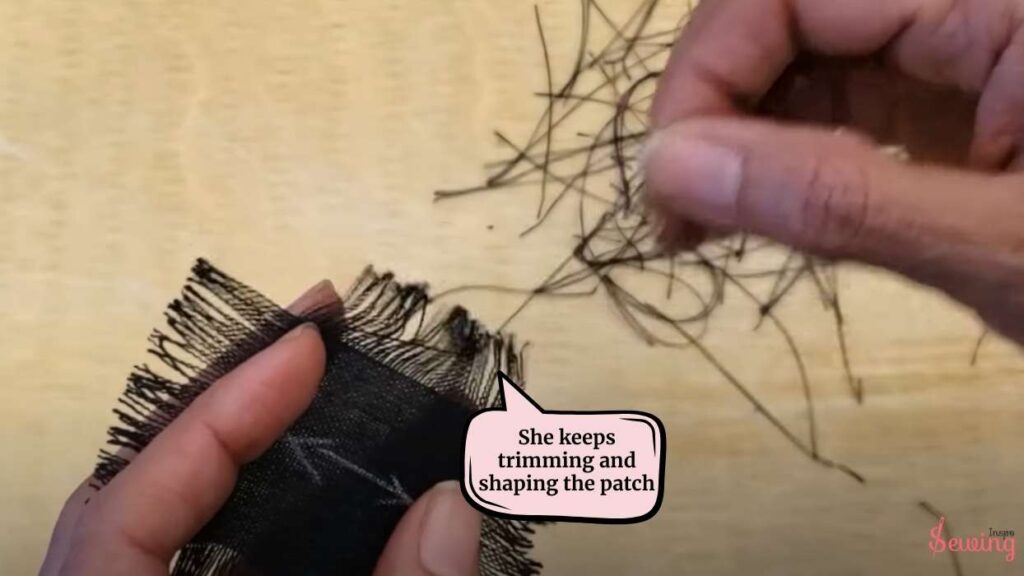
In the meantime, grandma shares a tip:
Check how the fabric is woven and line up your patch so it matches. Mark where you’ll sew, and start stitching at the corners. Keep your stitches small and neat; before you know it, your patch will blend right in!”
That’s how invisible stitching hole repair works.

Is the extra piece of cloth necessary? Can’t I do it with a thread? I asked my grandma.
She said,
Not really! You can do an invisible darning stitch with an extra cloth and matching thread like scotch darning. The choice depends on you. I’m doing it this way cause it will make the most secure hand stitch.
This is what invisible darning will do. It will cover the damaged part like a honeycomb darn.
Now, let’s get into how to do invisible mending by hand.

How to do invisible mending by hand?
Now let’s start doing the invisible darning or mending.

While saying this, she
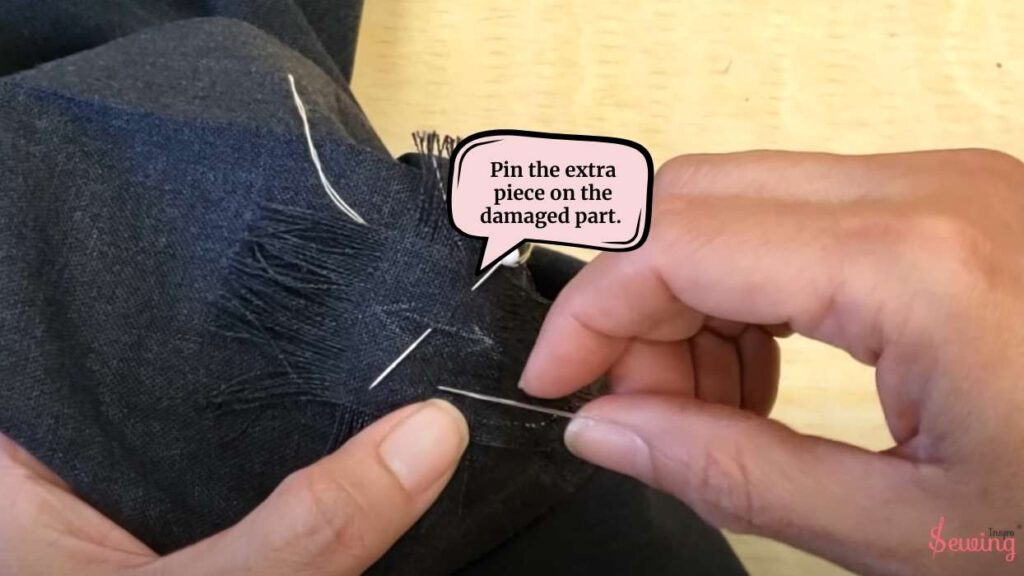
Pin the extra piece on the damaged part. And put the fabric into the darning mushroom. That’s the must need for invisible stitches for holes or finding things to hand sew.
To make things easier, I glue fabric to keep things in place. It makes the process a bit simpler for them & does invisible stitch hole repair. That’s how to start a sewing stitch.
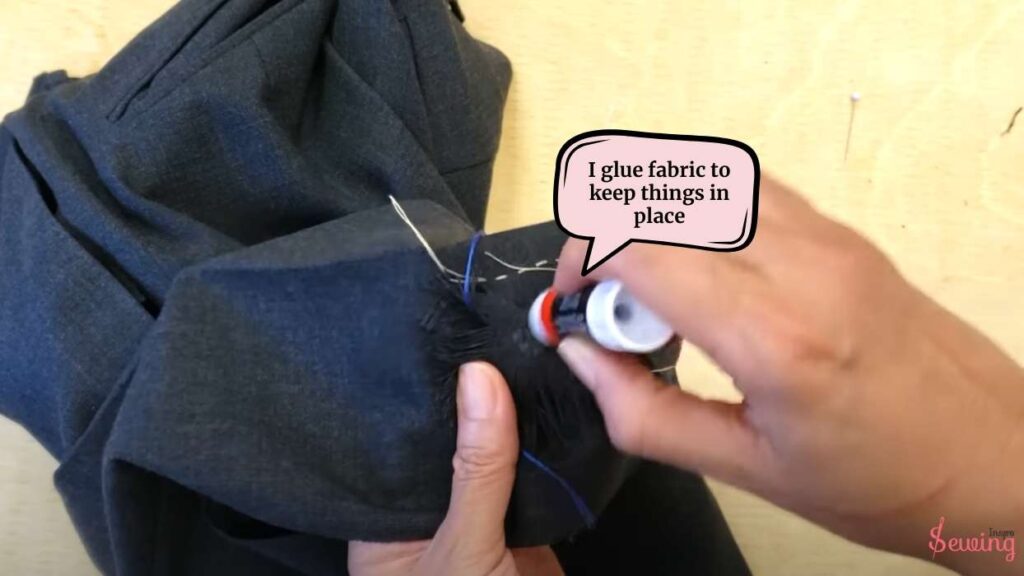
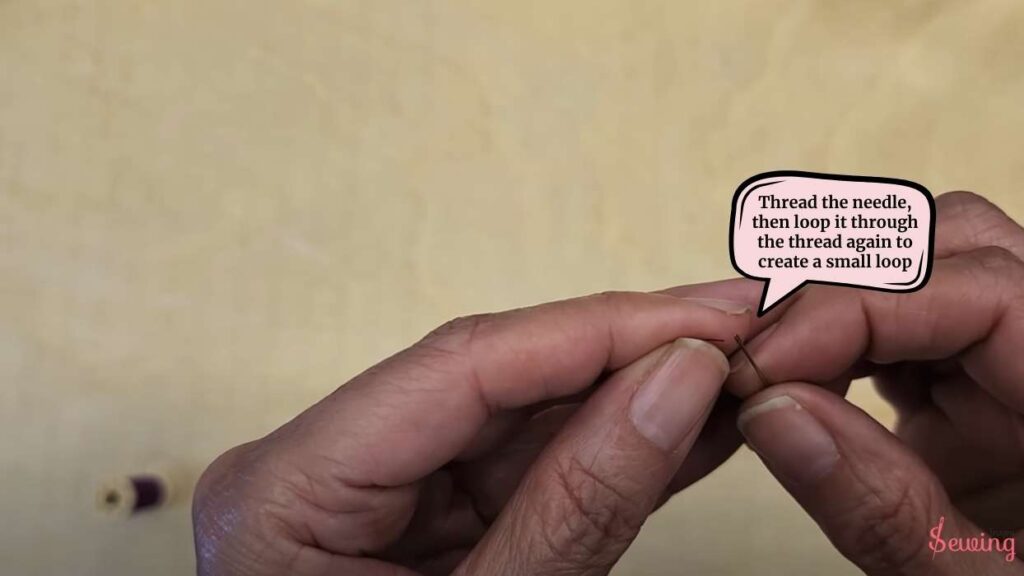
Thread the needle, then loop it through the thread again to create a small loop. This loop helps weave all those tiny threads back in place. Yes, every single thread matters, so choose the color that matches your cloth color. That’s what is stitches in sewing.
It’s important to match the patch’s weave pattern with the fabric’s original design. The patch won’t blend in or be invisible if it doesn’t match. It needs to be invisible. I even do diagonal darning stitches by hand with matching thread sometimes.
That’s what is the Invisible darning stitch?
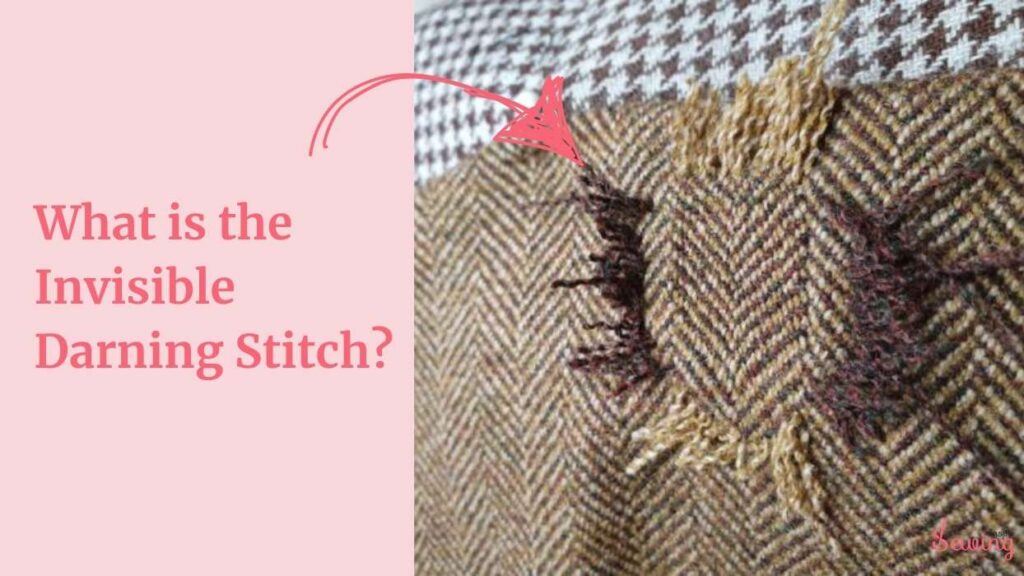
They say you should start stitching from the corners, but I find starting from the middle of one side easier. I stitch thread by thread to weave it into the fabric. It takes patience, but the result is worth it, like all kinds of darning stitches.
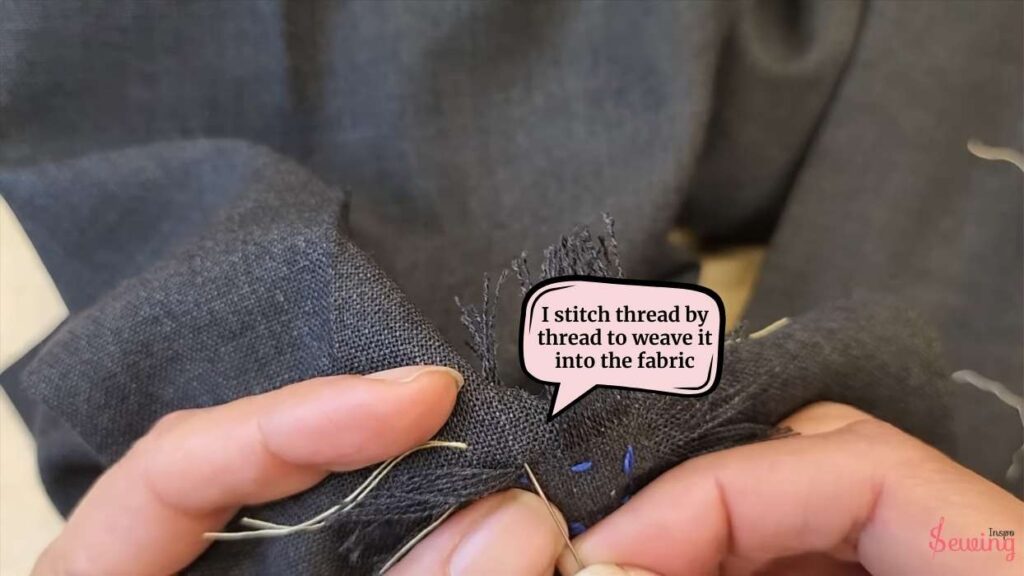
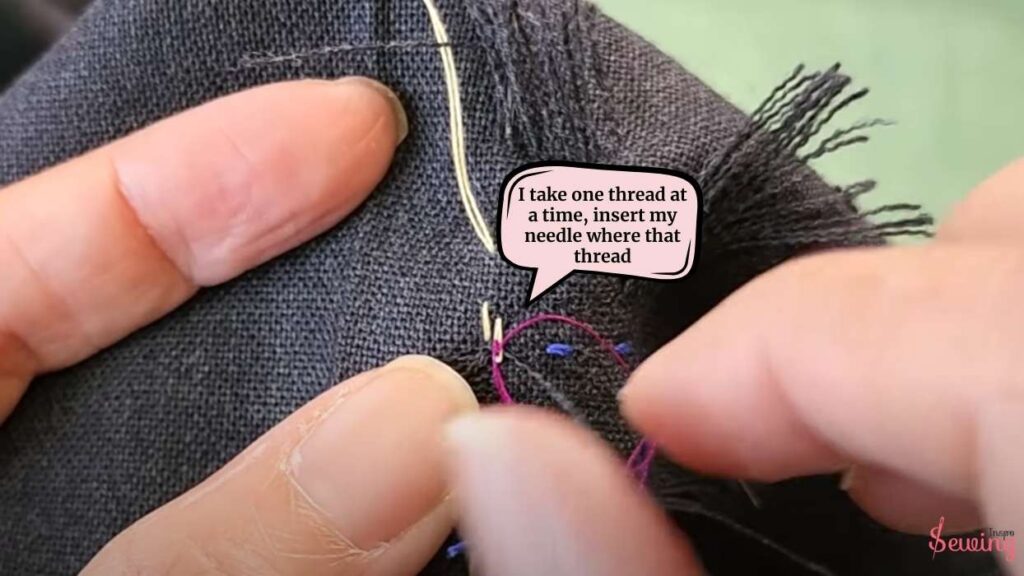
I take one thread at a time, insert my needle where that thread would naturally be in the fabric, and make sure the needle passes through the loop. This won’t create darning patterns but it will repair the hole.
Then, I pull the needle out about ½ inch. which is perfect for invisible mending. That’s it! You just keep repeating this process, single out a thread and insert the needle. Ensure it catches the loop and pulls it out on the other side.
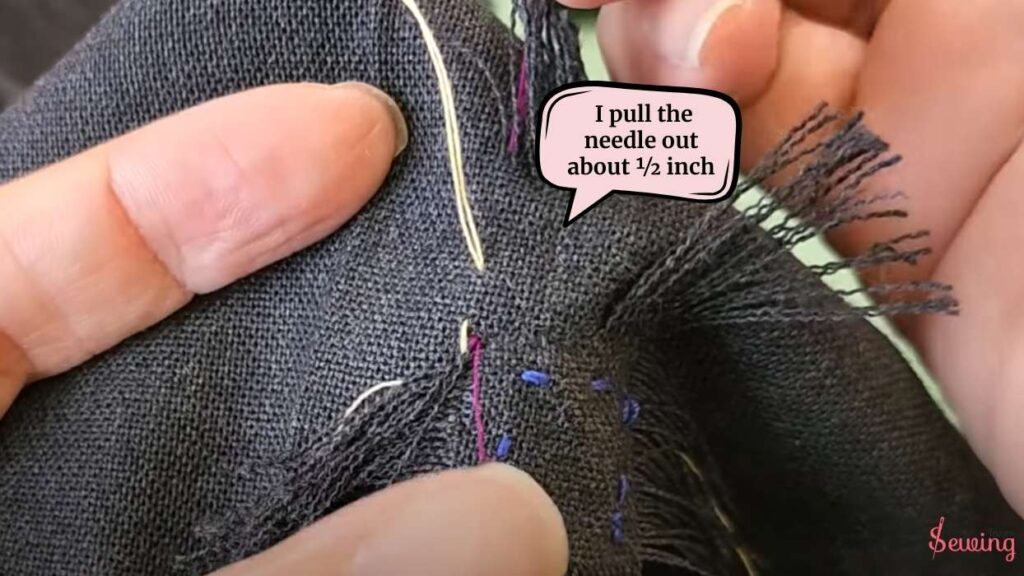
It’s a bit tricky and requires patience. Honestly, once it’s done, it will be worth it. Once you are done with the stitch, iron it from the outside. And that’s it! You are done cloth is as good as new.
After learning How to do an Invisible darning stitch from grandma I never throw my clothes. It only takes 10 min to repair the clothes, so why buy new ones? happy sewing
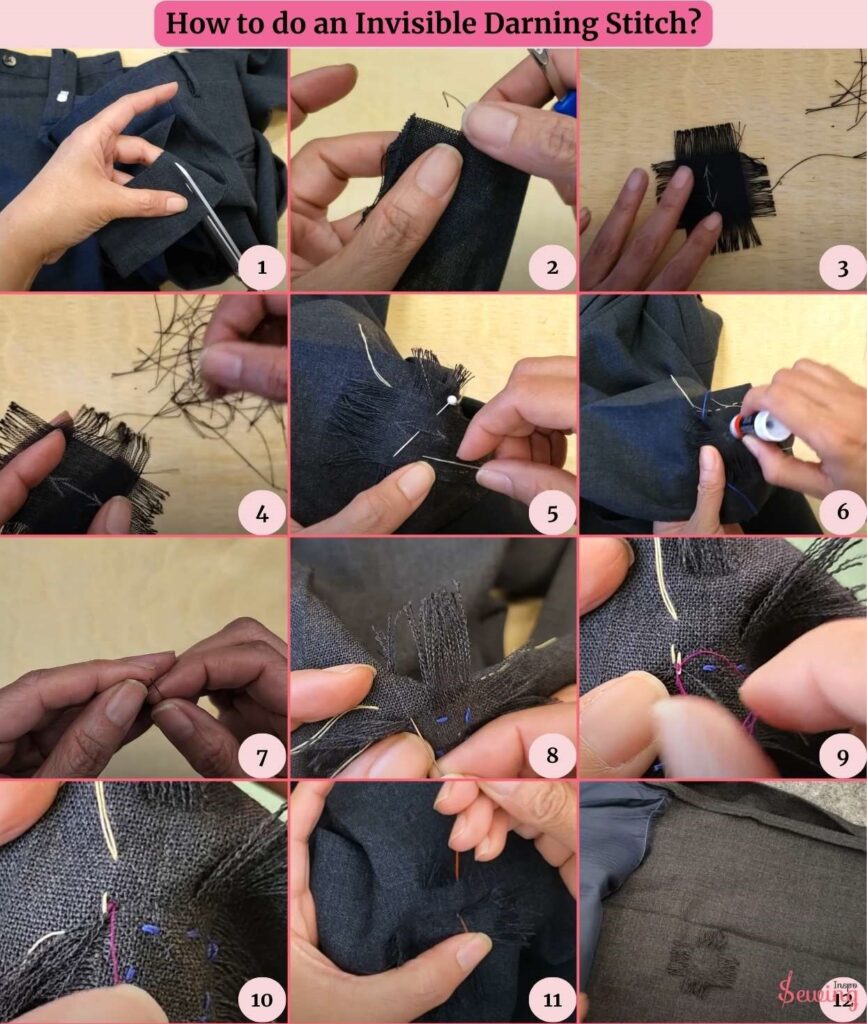
Invisible Stitching Hole Repair Mistakes
Here are some common mistakes people make when repairing holes with invisible stitching:
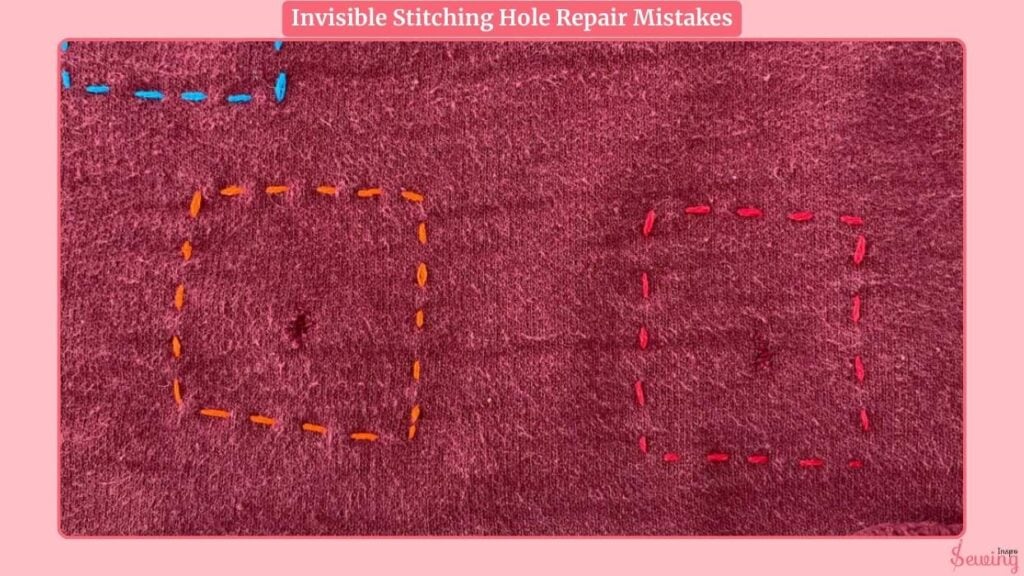
- Using the wrong thread color
- Skipping fabric stabilisation
- Pulling stitches too tight.
- Not trimming frayed edges
- Forgetting to secure the ends
Avoid those, and you will have the perfect repair.


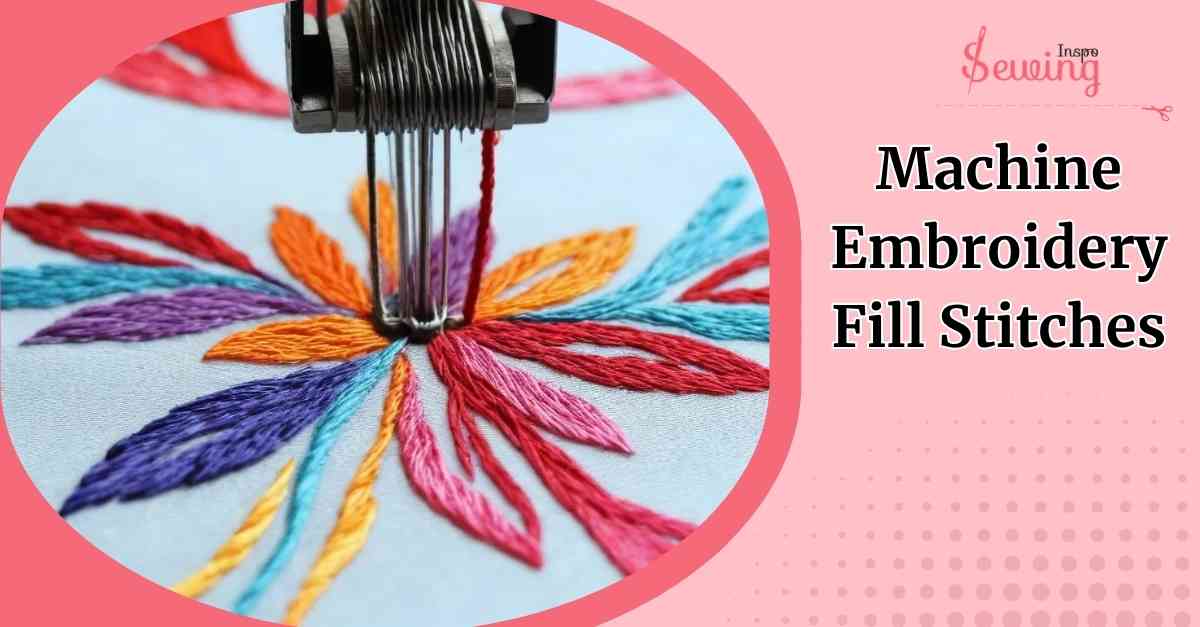
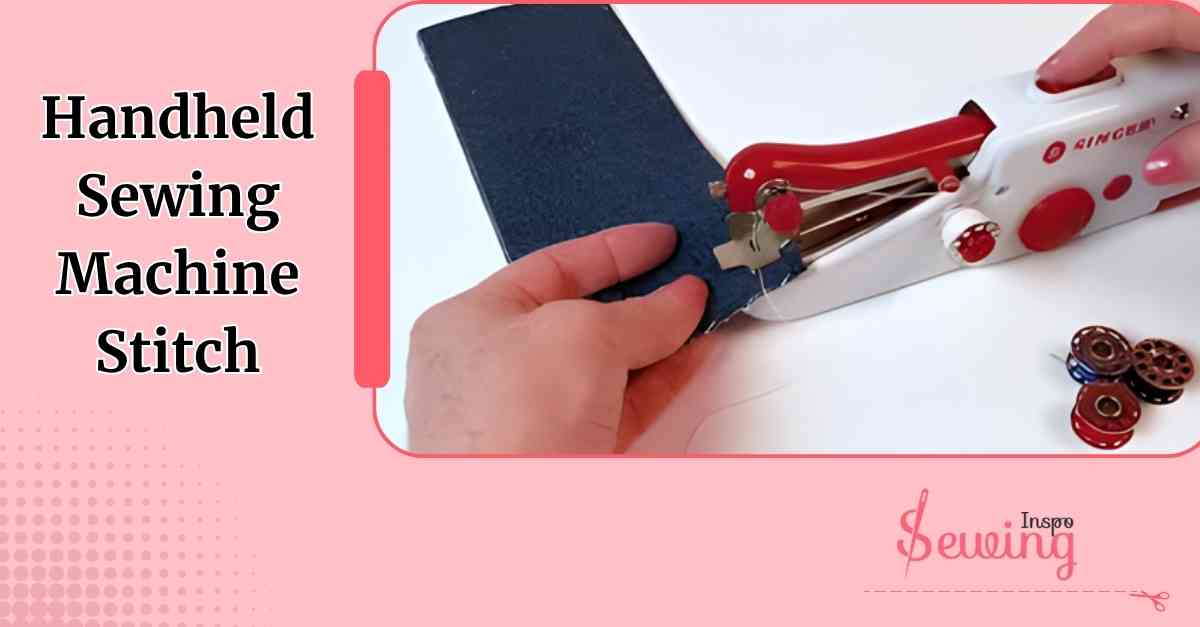

Leave a Reply